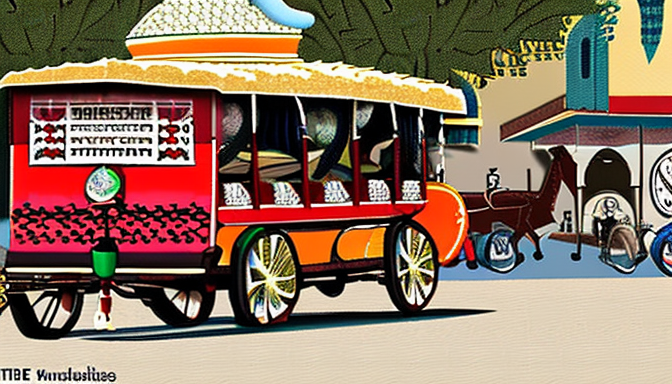Karachi, once a quaint fishing village, has transformed into a bustling metropolis. But what about its vintage charm? This city holds stories, memories, and a rich tapestry of history that still whispers through its streets. If you take a moment to pause, you can almost hear the echoes of the past. Imagine walking through narrow lanes, where every corner reveals a piece of history. Vintage photographs and historical maps serve as portals, transporting us back in time.
These images capture Karachi’s evolution. From the colonial-era buildings that still stand tall, to the bustling markets filled with vibrant colors, each photograph tells a story. Have you ever wondered how a city changes yet retains its soul? Karachi does just that. The old structures, with their intricate designs, remind us of a time when craftsmanship was revered. They are not just buildings; they are testaments to the city’s architectural journey.
As we explore these visual treasures, we see the influence of various cultures. The blend of traditions and innovations creates a unique identity. Karachi’s vintage era is not just about the past; it’s about understanding how it shapes the present. So, next time you stroll through this vibrant city, take a moment to appreciate the layers of history beneath your feet. They are the very foundation of what makes Karachi special today.
The Architectural Marvels of Karachi
Karachi is a city where the past whispers through its buildings. Each structure tells a story, a snapshot of a different time. Imagine walking down the streets, surrounded by stunning architectural styles that blend colonial charm with modern flair. Have you ever wondered how these styles came to be?
From the grandiosity of the Frere Hall to the intricate designs of the Mohatta Palace, Karachi’s skyline is dotted with gems that reflect its rich history. These buildings are not just concrete and bricks; they are testaments to the city’s diverse influences. The colonial era left a profound mark, introducing Gothic, Indo-Saracenic, and Art Deco styles that still capture our imagination today.
Take a moment to appreciate the vintage photographs and historical maps that reveal Karachi’s evolution. They show a city that has transformed yet retained its essence. Here’s a glimpse of some significant architectural landmarks:
| Landmark | Year Built | Architectural Style |
|---|---|---|
| Frere Hall | 1865 | Gothic Revival |
| Mohatta Palace | 1925 | Indo-Saracenic |
| Empress Market | 1889 | Victorian |
As you explore these architectural marvels, you can almost hear the stories of the people who walked these streets long before us. Their lives, their struggles, and their triumphs are woven into the very fabric of these buildings. Karachi isn’t just a city; it’s a living museum, showcasing the beauty of its past while looking forward to the future.

Cultural Heritage and Traditions
Karachi is more than just a bustling metropolis; it’s a tapestry of history woven with vibrant threads of culture and tradition. As you stroll through its streets, you can almost hear the echoes of the past. Imagine the old bazaars, where merchants once gathered to sell spices, textiles, and handcrafted goods. These places are not just markets; they are living museums, telling stories of generations.
The cultural heritage of Karachi is rich and diverse. From the colorful festivals to the traditional music, every aspect reflects the city’s unique blend of influences. The Sindhi Ajrak, for instance, is more than a piece of cloth; it’s a symbol of identity. Similarly, the vibrant truck art that adorns vehicles tells tales of love, nature, and the everyday life of the people.
Throughout the years, Karachi has seen a transformation in its traditions, yet many have remained steadfast. Festivals like Eid and Basant bring people together, showcasing the city’s spirit. Families gather to celebrate, sharing food and laughter. This sense of community is what keeps the heritage alive.
To truly appreciate Karachi’s evolution, you must see it through the lens of vintage photographs and historical maps. These images capture a time when the city was a quaint port town and reveal how it blossomed into the sprawling urban center it is today. They serve as a reminder of the rich history that continues to shape its identity.
Frequently Asked Questions
- What is the historical significance of Karachi?
Karachi, once a small fishing village, has transformed into one of the largest cities in the world. Its history is rich with colonial influences, trade, and cultural exchanges that have shaped its identity over the years.
- What architectural styles can be found in Karachi?
Karachi boasts a mix of architectural styles, including colonial, Mughal, and modern influences. Notable buildings like the Frere Hall and Mohatta Palace reflect the city’s diverse heritage and tell stories of its past.
- How have Karachi’s cultural traditions evolved?
The cultural traditions of Karachi are vibrant and dynamic, blending various influences. While some practices have changed over time, many have been preserved, showcasing the city’s rich heritage through festivals, music, and cuisine.
- Are there any vintage markets in Karachi?
Yes! Karachi is home to several vintage markets where you can find antiques, traditional crafts, and unique items that reflect the city’s historical charm. Places like Empress Market are a treasure trove for vintage lovers.
- How can I explore the vintage charm of Karachi?
To explore Karachi’s vintage charm, consider taking a guided tour that focuses on historical sites, architecture, and local traditions. Walking through the old neighborhoods can also reveal hidden gems and stories from the past.